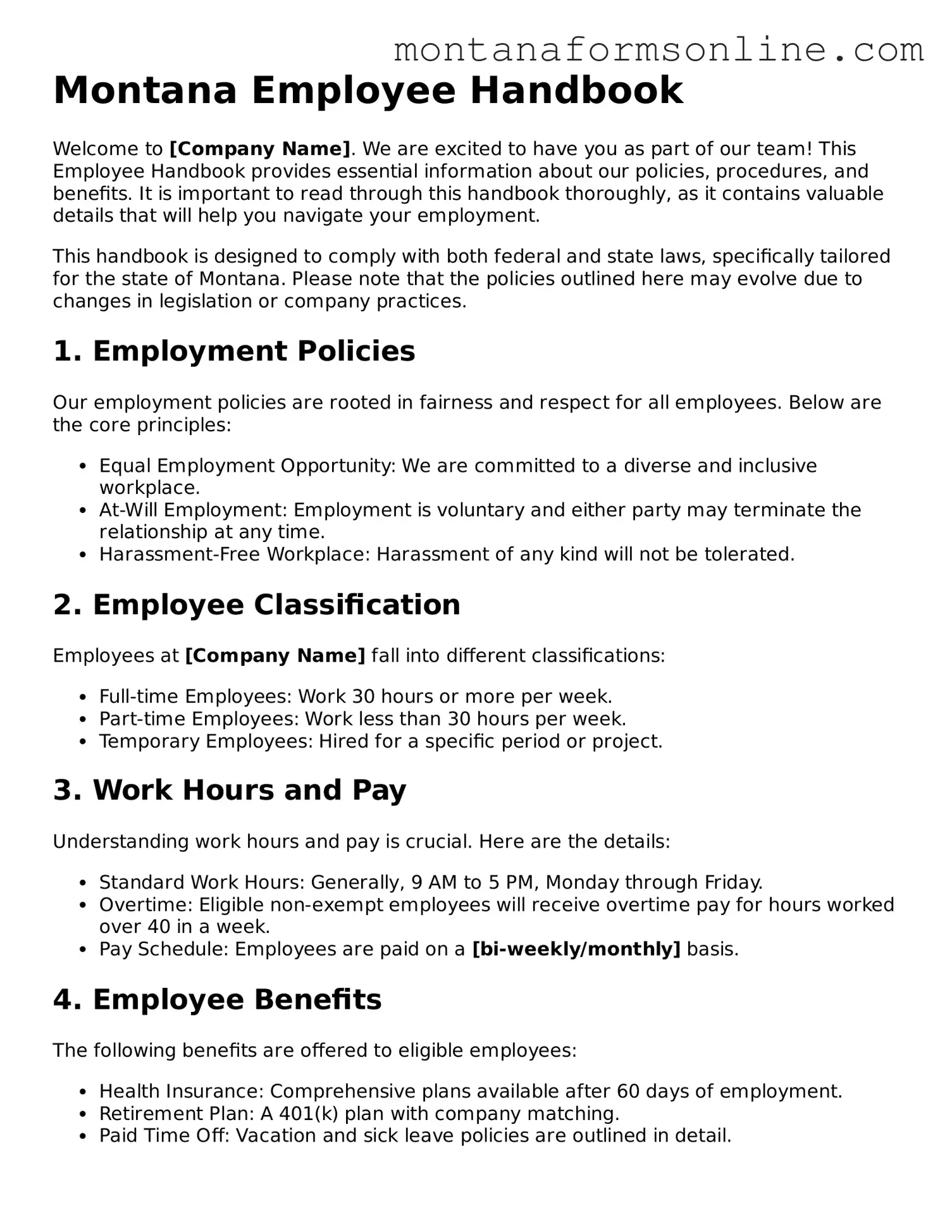Montana Employee Handbook
Welcome to [Company Name]. We are excited to have you as part of our team! This Employee Handbook provides essential information about our policies, procedures, and benefits. It is important to read through this handbook thoroughly, as it contains valuable details that will help you navigate your employment.
This handbook is designed to comply with both federal and state laws, specifically tailored for the state of Montana. Please note that the policies outlined here may evolve due to changes in legislation or company practices.
1. Employment Policies
Our employment policies are rooted in fairness and respect for all employees. Below are the core principles:
- Equal Employment Opportunity: We are committed to a diverse and inclusive workplace.
- At-Will Employment: Employment is voluntary and either party may terminate the relationship at any time.
- Harassment-Free Workplace: Harassment of any kind will not be tolerated.
2. Employee Classification
Employees at [Company Name] fall into different classifications:
- Full-time Employees: Work 30 hours or more per week.
- Part-time Employees: Work less than 30 hours per week.
- Temporary Employees: Hired for a specific period or project.
3. Work Hours and Pay
Understanding work hours and pay is crucial. Here are the details:
- Standard Work Hours: Generally, 9 AM to 5 PM, Monday through Friday.
- Overtime: Eligible non-exempt employees will receive overtime pay for hours worked over 40 in a week.
- Pay Schedule: Employees are paid on a [bi-weekly/monthly] basis.
4. Employee Benefits
The following benefits are offered to eligible employees:
- Health Insurance: Comprehensive plans available after 60 days of employment.
- Retirement Plan: A 401(k) plan with company matching.
- Paid Time Off: Vacation and sick leave policies are outlined in detail.
5. Employee Conduct
We expect all employees to uphold the highest standards of conduct:
- Professionalism: Treat everyone with respect and courtesy.
- Confidentiality: Protect sensitive company and client information.
- Conflict of Interest: Avoid situations that could lead to a conflict between your interests and the company’s.
6. Health and Safety
Your health and safety are top priorities. We adhere to all Montana safety regulations:
- Workplace Safety: Follow all safety protocols and report hazards immediately.
- Emergency Procedures: Familiarize yourself with emergency exits and procedures.
7. Acknowledgment of Receipt
All employees should sign the acknowledgment form:
I have received and read the Employee Handbook of [Company Name] and understand the policies and procedures outlined herein.
Name: _______________________
Signature: ____________________
Date: _______________________
